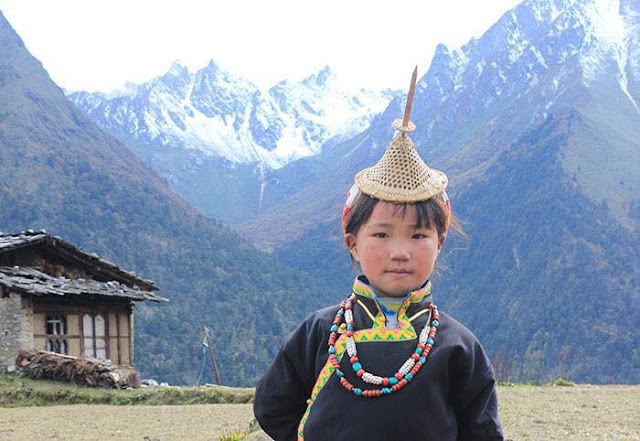GASA - GATEWAY TO NORTHERN BHUTAN
Gasa is also known for its unique highland culture, celebrated every year during its annual tshechu (mask dance festival) and the colourful Royal Highland Festival and the Laya Run. The district is inhabited by Layap nomadic and semi-nomadic herders who live and move with their yaks between pastures and valleys at elevations ranging from 1,500 to 4,500 metres.
Gasa and its surrounding area are home to both pastoralists and farmers. On one of my first trips to Bhutan in 2012, I spent time with local farmers to learn about the challenges and constraints they struggle with in the face of rapid climate change. During this field trip, farmers in Gasa openly welcomed me into their homes and fields. I was touched by their warmth, hospitality, generosity, kindness, as well as their willingness to share their lives. I came to appreciate their love for their land in this stunning region of Bhutan, as well as their hard work, knowledge and ingenuity in a rapidly changing context.


The Gasa landscape is accentuated by the uniquely shaped Dzong that sits on a high mountain slope overlooking the valley below. The eastward facing Dzong features a circular shape, with three strategically located Ta Dzongs (watch towers), and a small sacred lake below it. On clear days, it is possible to see the gleaming snow-capped Mount Kangbum from the fortress, which accentuates the splendour of the surrounding mountains. The three storied Utse (central tower) is built directly above a cave where Dupthob Terkhungpa, a Tibetan saint, supposedly meditated in the 13th century. The Dzong was built in 1646 by Zhabdrung Ngawang Namgyal, the founder of Bhutan, to commemorate historical victories over Tibetans. It later served as a defensive mountain fortress against several invasions in the 17th and 18th centuries. It is locally known as Tashi Thongmon Dzong, named after the region’s protecting deity Tashi Thongmon. Legend recounts that when Zhabdrung made his way to Bhutan in 1616, the local deity of Gasa travelled to Tsari Kibuthang in Tibet to welcome him. Zhabdrung blessed the deity, giving him the new name of Tashi Thongmon, after which the Dzong was later named.
In January 2008, the Gasa Dzong was damaged by fire. In 2014, renovation and restoration work was undertaken to restore the Dzong to its former glory. The Gasa Dzong Conservation project and the construction of the new Drasha (monk quarters), funded by the Royal Government of Bhutan and the Government of India, entailed over 170 workers working painstakingly over four long years to ensure that the restoration was carefully carried out true to the original architectural design of the Dzong. The work was finally completed this year, and plans are underway to consecrate the Dzong early next year (consecration entails carrying out deeply spiritual rituals to bless and protect it).
A two-hour walk from Gasa town are the famous hot springs, located on the picturesque ridge below. Known for their healing powers, the calming Gasa Tshachu (hot springs) attract Bhutanese visitors from across the country and foreign tourists alike. The hot springs are close to the banks of the roaring Mo Chhu River. A new road has made it easier for visitors to get to the site, and newly built guesthouses provide visitors the option of spending a night or more in this charming setting surrounded by immense mountain cliffs.
After the simple out-door baths were washed away in 2009, five new bath houses were constructed, making the experience more enjoyable. While I adored the relaxing charm of the earlier out-door baths, I appreciate the new comfort of the new baths. For those who enjoy their privacy, one of the bath houses can apparently be booked in advance for exclusive use by contacting the manager of the complex. In addition to an outdoor pool, there are five different covered pools. Similar to the famous thermal baths of Italy, each pool varies in water temperature. In distinct Bhutanese style and respect for mindfulness, each pool also varies in medicinal value, providing visitors to the hot springs several healing choices. Shower facilities are also available, which ensure that the hot springs remain clean and hygienic.











Comments
Post a Comment